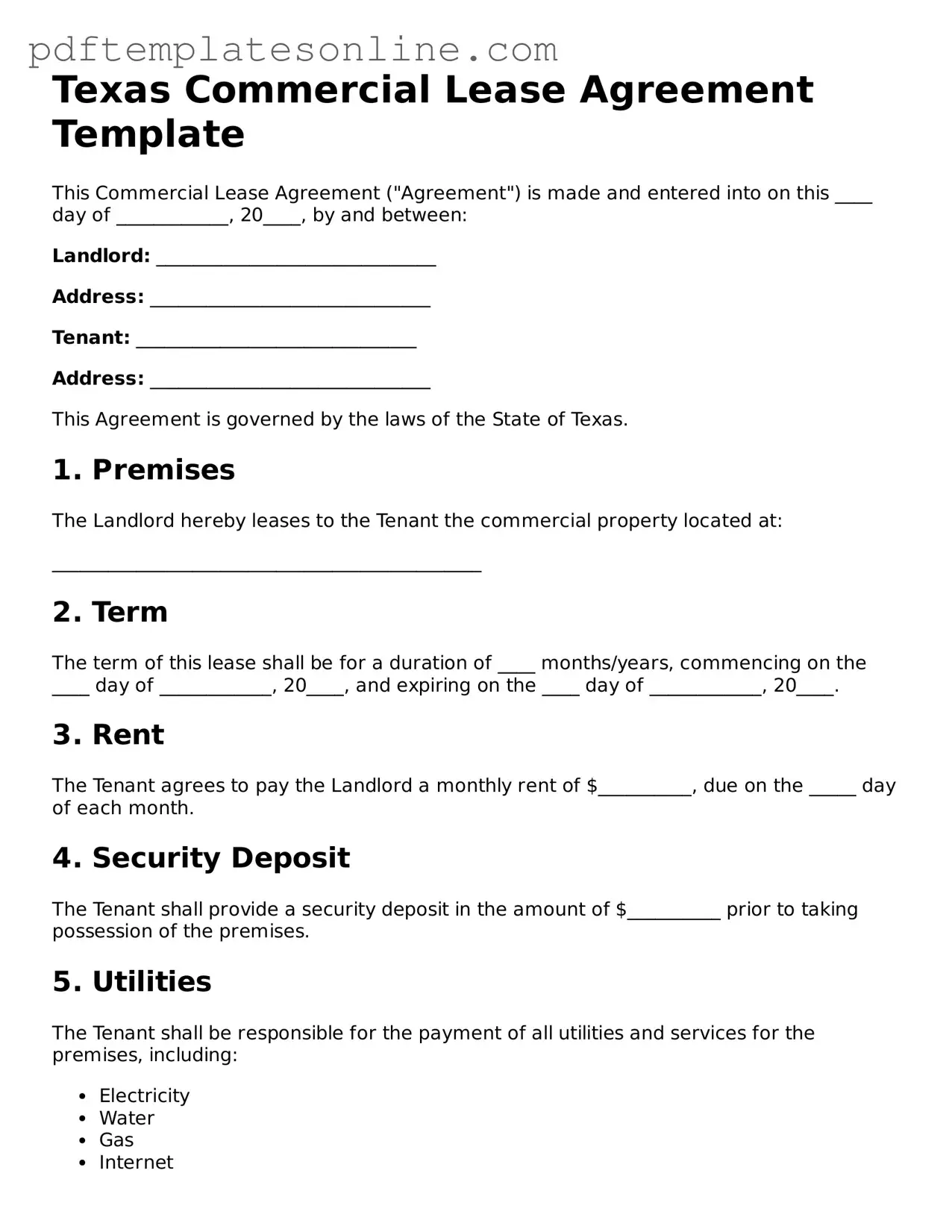Filling out a Texas Commercial Lease Agreement can be a daunting task. Many individuals make mistakes that can lead to misunderstandings or legal issues down the line. One common error is failing to clearly define the lease term. It is crucial to specify the start and end dates of the lease. Without this clarity, both parties may have different expectations regarding the duration of the agreement.
Another mistake often encountered is neglecting to detail the rent payment terms. Rent should be clearly stated, including the amount, due date, and acceptable payment methods. Omitting these details can create confusion and disputes later on. Additionally, some people forget to include provisions for late fees. This can lead to challenges in enforcing payment policies if they are not explicitly outlined.
Many individuals overlook the importance of specifying maintenance responsibilities. It is essential to clarify who is responsible for repairs and upkeep of the property. If these responsibilities are not clearly defined, disputes may arise regarding who should handle maintenance issues. Furthermore, failing to address property modifications can lead to complications. Tenants should know what changes they can make and whether they need landlord approval.
Another frequent oversight is not including a clear description of the leased premises. A vague description can lead to misunderstandings about what is included in the lease. It is advisable to be specific about the space being rented, including square footage and any included amenities. Additionally, people sometimes forget to outline the permitted use of the property. Clearly stating what the space can be used for helps prevent conflicts later.
Some individuals neglect to review the termination clause. This section outlines how either party can terminate the lease and under what conditions. Without a clear termination process, both parties may find themselves in difficult situations if they wish to end the agreement. Similarly, failing to include renewal options can limit flexibility for both landlords and tenants.
People often make the mistake of not consulting local laws and regulations. Texas has specific requirements for commercial leases that must be adhered to. Ignoring these regulations can result in an invalid lease agreement. Additionally, some individuals do not seek legal advice before signing. Consulting with a legal expert can provide valuable insights and help avoid potential pitfalls.
Lastly, many individuals rush through the signing process without thoroughly reviewing the entire document. It is vital to read each section carefully and ensure that all information is accurate. Mistakes made during this phase can have lasting consequences. Taking the time to double-check everything can save a great deal of trouble in the future.
